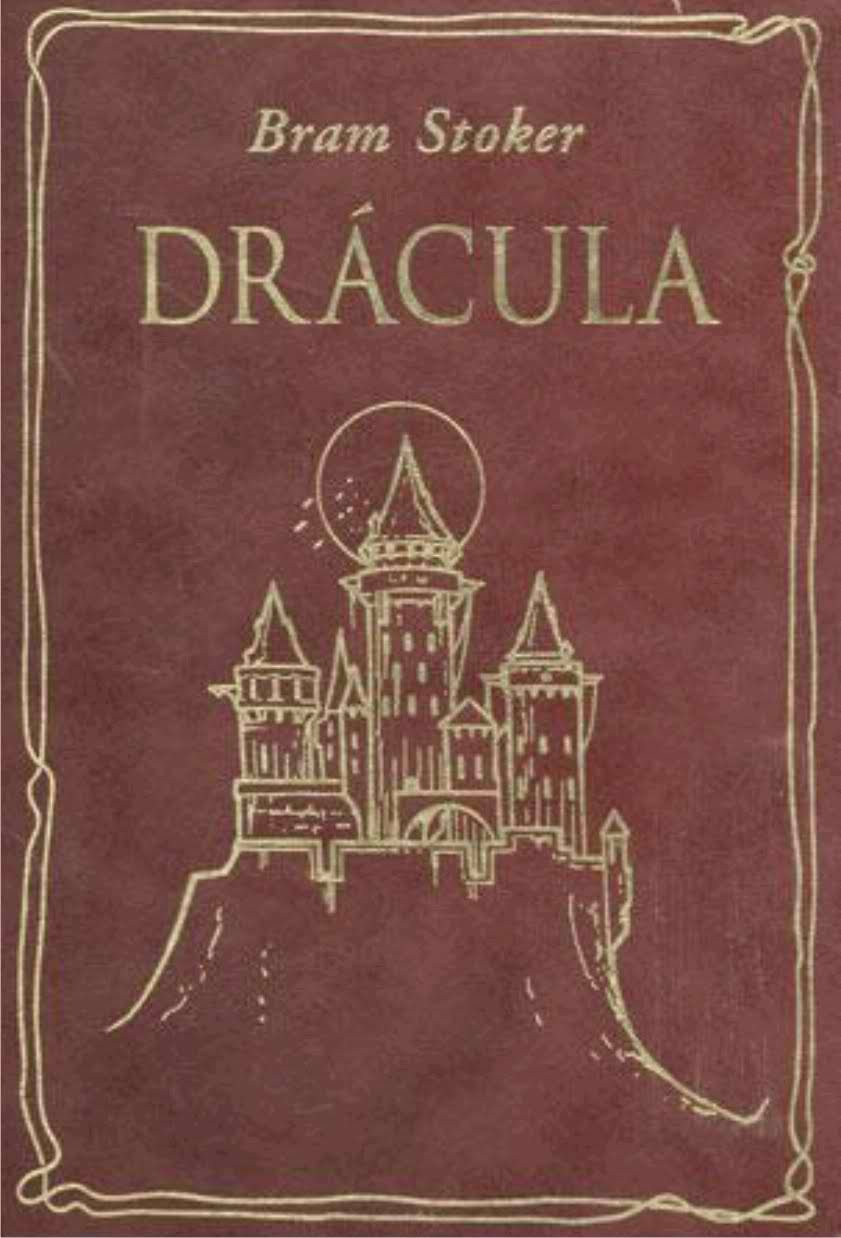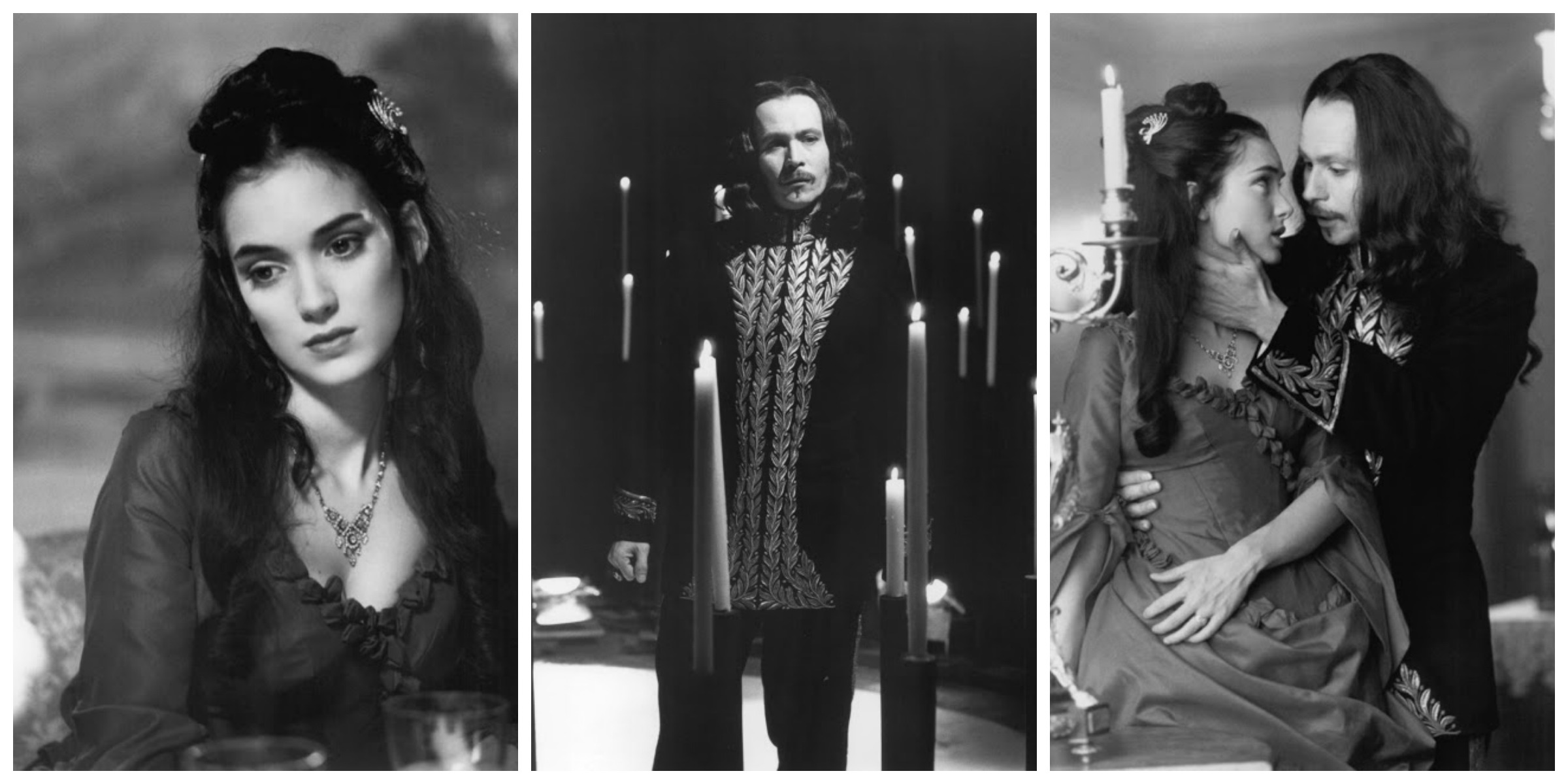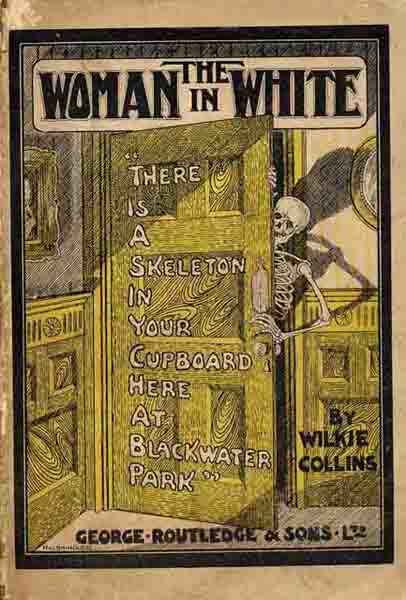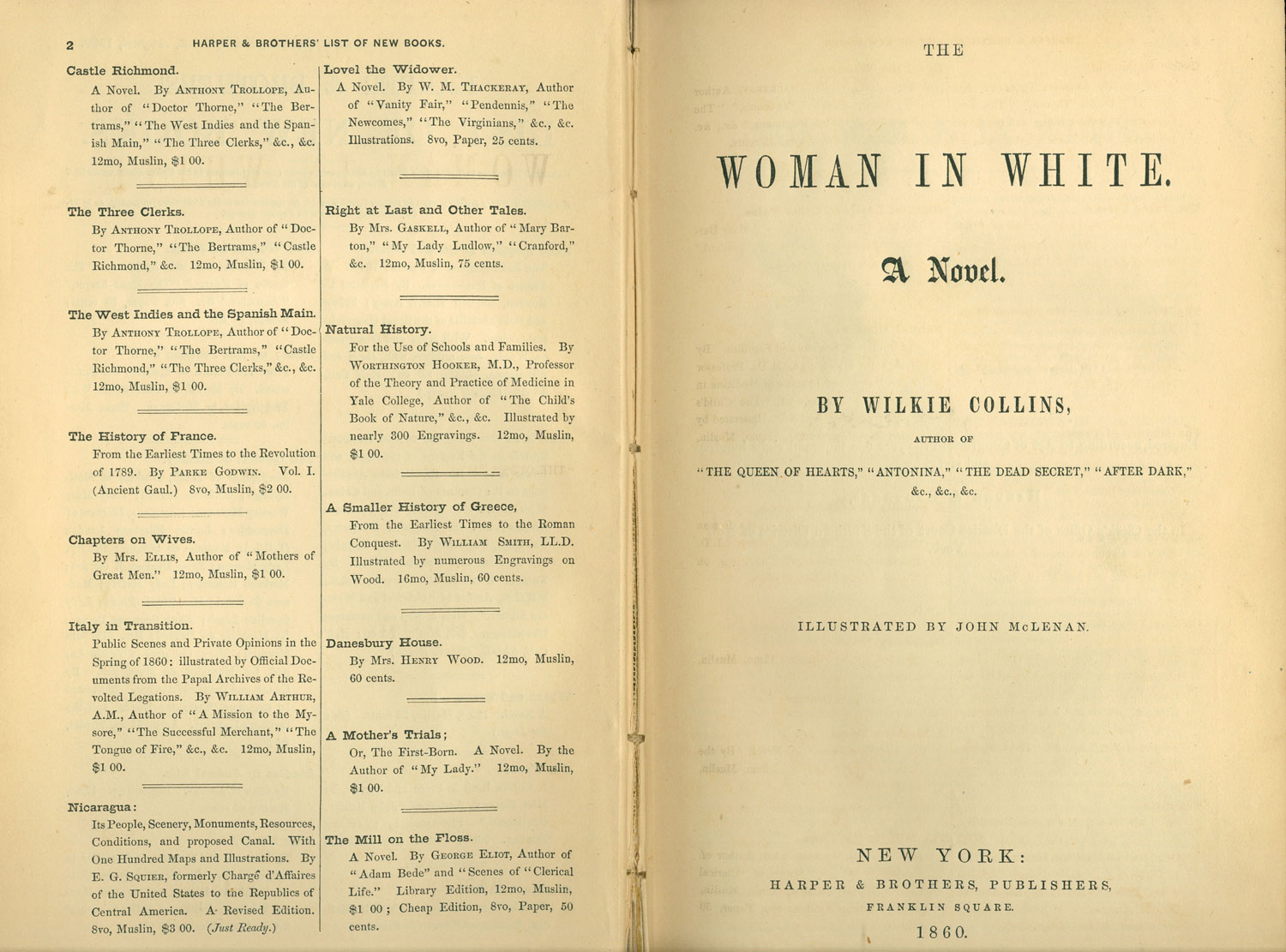The female and the feminine in Dracula and The Woman
in White.
‘Different
though the sexes are, they intermix. In every human being a vacillation from
one sex to the other takes place, and often it is only the clothes that keep
the male or female like-ness, while underneath the sex is the very opposite of
what is above. Of the complications and confusions which thus result every one
has had experience’
One must assess the distinction between the
biology and psychology of gender; an individual’s gender is distinguished by
their dress and outward appearances. It is not until the reader and other
characters get a closer look to discover that often their psychology and
personality have characteristics of both genders- it is in this way that many
characters in Dracula and The Woman in White transgress traditional gender
roles.
What separates
the masculine and the male, the feminine and the female in these two novels and
how characters, male and female often move about between them.
Jonathan Harker declares the gender of the
three vampiric women in Dracula’s castle; they are clearly ‘ladies by their
dress and manner’ this assumption is soon proven wrong, he hears ‘the churning
sound of [one of the women’s] tongue as
it licked her teeth and lips, and [he] could feel the hot breath on [his]
neck.’ Like a fire-breathing dragon she
asserts her masculine power over him. This strong presence causes Harker to
faint, the horror ‘overcame [him] and [he] sank down into unconsciousness’;
this can be contrasted to Mina who is ‘not of a fainting disposition’. By
fainting Harker’s response corresponds with a typically feminine role to pass
out, the shock of his experience proving too much for him. He expresses that
‘there was something about them that made me feel uneasy, some longing and at
the same time some deadly fear. I felt in my heart a wicked burning desire that
they would kiss me with those red lips’ This is an example of fear versus
desire that is common throughout the two novels to define masculinity and femininity,
it would normally be the powerful male asserting his power and the weaker,
passive female desiring him. Harker here takes on a passive role; and the
masculine female takes control of the feminine male. This mechanical likeness
of the ‘churning tongue’ removes any emotional connections to a woman the
reader may have these women are no longer feminine, or even female, they
transgress so completely out of femininity that they cannot even be classed as
males, perhaps only as ‘monsters’.
Tori Moi in Sexual/ Textual Politics coins
the term ‘monster woman’ not as a reference to the literal supernatural monster
of Gothic fiction but to describe the ‘new woman’ that Mina Harker and Marian
Halcombe can be likened to. This ‘monster woman’ ‘is the woman who refuses to
be selfless, acts on her own initiative, who has a story to tell – in short, a
woman who rejects the submissive role patriarchy has reserved for her’ by
remaining a single woman and taking an active role in the discovery of the
identity of the mysterious woman in white, Marian does exactly this. Moi goes
on to explain that ‘the duplicitous woman is opaque to man, whose mind will not
let itself be penetrated by the phallic probings of masculine thought’.
Dracula,
by using feminine terms to describe him – is not the masculine, phallic power
Moi describes, that is more like Sir Percival, of even Count Fosco. Although
Dracula invades Mina’s mind he does not control it, Dracula’s femininity allows
Mina and the men to use it to their advantage. As easily as Dracula changes
from old to young, he shifts from masculine to feminine. Like ‘a child forcing
a kitten’s nose into a saucer of milk’ he maternally feeds his blood to Mina, although it has darker undertones, this
image comes across as feminine; as if he is feeding Mina for her own good.
Conversely Dracula has the potential to be a powerful and dangerous man, his
eyes ‘blazed with a sort of demonic fury’ at the sight of Harker’s blood on his
chin, he uncontrollably ‘[makes] a grab at’ Harker’s throat. Dracula is the
only character who is able to change so quickly from feminine to masculine
without any noticeable changing process; possibly because he lacks humanity he
therefore lacks any gender stability.
The
male desire to assist a damsel in distress throughout Dracula and The Woman in
White.
Hartright,
upon his first meeting with Anne notes that ‘the loneliness and helplessness’
of her affected him, ‘the natural impulse to assist her and to spare her, got
the better of the judgment, the caution, the worldly tact, which an older,
wiser and colder man might have summoned to help him in this strange
emergency’. Reason and rationality are overridden by the desire to help the
weak, and the helpless; here are conflicting masculine impulses. Hartight acts
upon his urge to be ‘the knight in shining armour’ that many of the male
characters in the novels aspire to be. Even Mina, one of the stronger female
characters, is subjected to this impulse, the men around her feel the need to
protect her and do not consider that she may, in fact be able to protect
herself. Dr Seward notes that ‘I must be careful not to frighten her’ immediately making the assumption that Mina conforms to the typical feminine
role as Lucy does and requires, for her health, censorship. He later states
‘Mrs Harker is better out of it. Things are quite bad enough for us, all men of
the world, and who have been in many tight places in our time; but it is no
place for a woman’ despite her efforts to act like a man and to be part of the group as an equal,
Mina’s womanly physical appearance blind the men into treating her and
protecting her as a woman should be.
In her diary, Mina does not separate the
masculine and feminine but instead distinguishes between good and evil, light
and dark. As she looks towards Whitby Abbey Mina sees Lucy, a ‘half reclining
figure, snowy white’ and a ‘man or beast’ ‘something dark’ leaning over her
in a domineering fashion. This is reminiscent of Harker’s experience in
Dracula’s castle – a powerful, overbearing masculine force, bent over a
powerless body - and has highly charged sexual connotations; Count Dracula is
forcing himself upon her as the three women forced themselves upon Harker. The snowy white figure of Lucy agrees with
the general view that white signifies innocence. In The Woman in White the
reader is in someway led to reassess such connotations – once we learn that the
strange figure of the woman in white has escaped from and asylum we make links
with the whiteness of an asylum, of medicinal sterility of straight jackets and
padded walls. At this moment in time, for the reader and for Hartright these
connotations overpower that of innocence, so as to make him become suspicious
or even frightened. The reassessment of the traditional symbolic meaning of
white happens in Dracula too where whiteness/ paleness instead takes on the
negative meaning of bloodlessness.
The uses of light and dark in The Woman in
White draw contrasts between the women, rather than between good and evil. Anne
is too white; her skin is deathly pale, and her strange habit, commented and
teased by Mrs Clements of wearing all white makes other characters wary of
her. Hartright describes her as having
‘a colourless, youthful face, meagre and sharp to look at about the cheeks and
chin; large, grave, wistfully attentive eyes; nervous uncertain lips; and a
light hair of a pale, brownish-yellow hue’.
She comes across as too weak, and too fragile; this is an extreme of the
Victorian female gender role. Collins could be commenting on the position of
women in society and if one should take their position as a weak passive female
too far they must prepare for negative consequences. This can be compared to
Hartright’s description of Laura Fairlie; she is light, beautiful, ‘her hair is
of so faint and pale a brown- not glossy- that it nearly melts, here and there
into the shadow of the hat’ and her eyes ‘of that soft, limpid, turquoise blue,
so often sung by the poets, so seldom seen in real life’ the features
damned in Anne are praised in Laura; this description could be foreshadowing
her downfall when mistaken as Anne. When Laura loses her identity and becomes
Anne catherick she too becomes ghostly white – brought upon by the asylum. The
dark, ugly Marian has more character, she is unusual and intriguing to the
reader, Hartright’s first impression of Marian is ‘the lady is dark’, he
describes ‘the lady’s complexion was almost swarthy, and the dark down on her
upper lip was almost a moustache. She had a large, firm, masculine mouth and
jaw; prominent, resolute, piercing eyes’ This is a very masculine description and unlike Mina, who has to fight against
her feminine appearance to prove her worth as her own person, Marian is
immediately confided in by Hartright, it could be argued with help from her
not-so fragile appearance, about his strange journey to Limmeridge house.
Harvey Peter Sucksmith, in the
introduction to the Oxford University Press publication of The Woman in White
explains the reason for, in his view, one hero and two heroines; he draws a
parallel between Hartright and the author’s own personal experiences - ‘we can
see now why there are two heroines inn the novel but only one hero, for Collins
achieves psychological validity with this trio by representing in Victorian
terms what have been called the anima and the shadow, that is, here, the
Victorian male’s idealised image of women together with much of a contradictory
nature that is excluded from that ideal. Collins, the man who later lived with
two women, depicts a hero who experiences the dual nature of women’.
Sucksmith suggests that Collins simplifies woman into two forms for the sake of
clarity for the reader. This can be taken that in this case one woman with both
attributes would not be effective; that men may be able to freely display both
sides of their nature, but women, in order to make sense in a Victorian novel
and in society, must be separated into two characters. Stoker on the other
hand, creates Mina of whom Helsing exclaims has a ‘man’s brain – a brain that a
man should have were he much gifted- and a woman’s heart’ This perhaps is
a better image of the ideal ‘new’ woman who happily displays feminine and
masculine attributes.
The mouth is often described as both cruel
and voluptuous in Dracula; ‘all three [vampire women] had brilliant white teeth
that shone like pearls against the ruby of their voluptuous lips.’ These images of pearls and rubies connote richness and abundance, as if Harker
is attempting to dress up the bad, masculine imagery in feminine jewellery. The
word voluptuous is often repeated by Stoker, and becomes a word loaded with
dark, sexual connotations. Lucy, at the beginning of the novel ‘so sweet and
sensitive that she feels influences more acutely than other people do’ becomes evil and voluptuous - Stoker uses this word to describe Lucy as many as
four times within two pages, ‘the sweetness was turned to adamantine, heartless
cruelty and the purity to voluptuous wantonness’. The site of the
burial place is a place of transgression from the feminine to the masculine for
Lucy; it is at her tomb that Lucy re-awakens as a vampire. Her whole appearance
changes, without any maternal instinct she preys on small children and is an
aggressive hunter, as if she has been re-born; Lucy’s eyes, the windows to her
soul, ‘the beautiful colour became livid, the eyes seemed to throw out sparks
of hell-fire, the brows were wrinkled as though the folds of the flesh were the
coils of Medusa’s snakes, and the lovely, blood stained mouth grew to an open
square….as if ever a face meant death- if looks could kill- we saw it at that
moment’.
The transformation is quick and is a movement from extreme good to extreme
evil. There is a link between the transition between life and death, between
masculine and feminine at a place of burial, this verifies Victorian
stereotypes of the weak women in neither novel do any male characters die so
never get chance to move across from femininity to masculinity or vice versa as
harshly as Lucy.
The tomb and the grave, is a key setting
in both novels, it is a place where the lines between life and death are
blurred. It is where the body of Anne Catherick is buried, but as Laura. At the
climax of the novel; the supposed dead Lady Glyde appears next to her very own
grave – the dead and the living (the very same person) standing side by side.
This is where the physical and the psychological play a part; Laura is
identified as Anne by her clothes, by her appearances only. Marian and Hartright
therefore become ‘accomplices of mad Anne Catherick, who claims the name, the
place and the living personality of the dead Lady Glyde’ Laura has completely lost her identity; she
claims ‘they tried to make me forget everything’ although her insistence
of her true identity is pushed aside and ignored over her appearance- she is in
Anne’s clothing therefore must be Anne. Collins draws light upon the thin line
between the sane and insanity. Insanity has a strong historical link with
females, female stepping out of place in society were reported as having
hysteria and that the label of insanity more often than not were restrictions
put on by men to keep unruly women in line which can be seen in Sir Percival’s
treatment of Anne. Harker once again becomes the feminine male, he reported as
hysteric and labelled mentally ill and
thus questions himself, ‘I feel my head spin round, and I do not know if it was
all real or the dreaming of a madman. You know I have had a brain fever, and
that is to be mad’.
Harker’s so called brain fever places doubt in the reader’s mind; fact and
fiction becomes intermingled, at this point in the novel even the reader is led
to question the authenticity of Harker’s diary. It is the only source of
information that Mina and the reader have to rely upon. It is at this point in
the novel that the reader instead of using Harker as the assertive, trustworthy
voice – turns to Mina.
The
main female characters often become frustrated with their gender throughout the
course of the novels.
Both
Mina and Marian become angry at their sex for restricting them, they are well
aware of the social implications of being female in Victorian society. Nobody is more aware of
the divide between the sexes than Marian, she orders Hartright not to ‘shrink
under’ his feelings for Laura ‘like a woman’ but to ‘tear it out, trample it
under like a man’, angry at Hartright for not using his male advantages. After
all she would be expected to shrink under her feelings, though when she does,
when she cries ‘miserable, weak, women’s tears of vexation and rage’ she is angry at herself for showing signs of weakness out of sheer frustration
that her sex allows her to do nothing else. Gentle Laura, noticing her sister’s
lapse of strength ‘put her handkerchief over my face, to hide for me the
betrayal of my own weakness- the weakness of all others which she knew that I
most despised’ Marian is an alternative of womankind; she defines a different type of
femininity to that of the Victorian stereotype. Susan Balée suggests an
alternative opening line to The Woman in White: that Hartright is instead a man
with a woman’s patience and Marian is a woman with a man’s resolution.
Dracula and The Woman in White are
interested in examining what lies beneath appearances of gender, Collins adopts
a more obvious approach by splitting two versions of the female in Laura and
Marian – both in appearances of fair and dark and in characteristics, mentally
weak and strong. Stoker combines these in the character of Mina – he does have
a stereotypically feminine female that is Lucy who transgresses from being
extremely feminine to extremely masculine. Both authors question the Victorian
masculine and feminine roles and how males and females fit into them, and if
there is any room for manoeuvring.
A little help from...
Stoker,
Bram – Dracula (Penguin Popular Classics: 1994) London.
Collins,
Wilkie – The Woman in White ed. Harvey Peter Sucksmith (Oxford University
Press: 1975) New York and Toronto.
Woolf,
Virginia – Orlando (Oxford World Classics: 1998) Oxford.
Moi,
Tori - Sexual/ Textual Politics:
Feminist Literary Theory (Routledge: 1999) London and New York
Jacobus,
Mary – Reading Women: Essays in Feminist Criticism (Columbia University Press:
1986)
Balée,
Susan – ‘Wilkie Collins and Surplus Women: The Case of Marian Halcombe’ Victorian
Literature and Culture. (Cambridge University Press:1992) Vol. 20 pp.197-215
Miller,
D.A – ‘Cage Aux Folles: Sensation and Gender in Wilkie Collins’ The Woman in
White’ Representation, No.14, The Making of the Modern Body: Sexuality and
Society in the Nineteenth Century pp. 106-136
http://www.jstor.org/stable/2928437.
Demetrakopoulos,
Stephanie – ‘Feminism, Sex Role Exchanges, and Other Subliminal Fantasies in
Bram Stoker’s “Dracula”’ Frontiers: Journal of Women Studies (1977) Vol. 2, No.
3 pp.104-113
Craft,
Christopher – “Kiss me with those red lips”: Gender and Inversion in Bram
Stoker’s Dracula’ Representations No8. (1984) pp107-33
http:/www.jstor.org/stable/2928560







